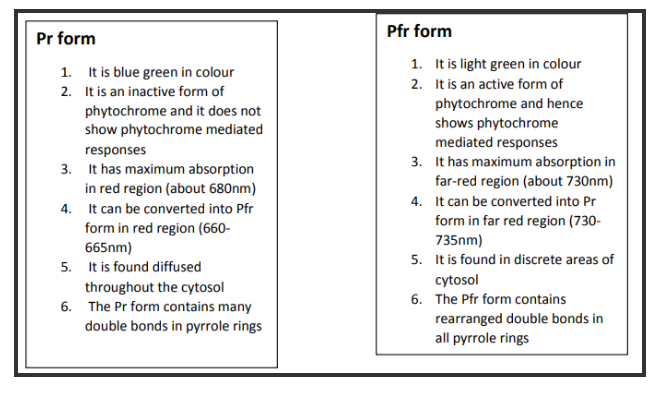JSS University Mysore 2025
NAAC A+ Accredited| Ranked #24 in University Category by NIRF | Applications open for multiple UG & PG Programs
19 Questions around this concept.
Photoperiodic stimulus is perceived by
Pfr activates flowering in
Which of the following statements is false regarding phytochrome?
The inactive form of phytochrome is
Pfr form of phytochrome absorbs light at
Phytochrome is a
Pigment phytochrome is involved in
NAAC A+ Accredited| Ranked #24 in University Category by NIRF | Applications open for multiple UG & PG Programs
Photosynthetically active radiation (PAR) represents which of the following ranges of wavelength?
Which of the following is a phytochrome-mediated photo response in plants
Plants follow different pathways in response to the environment or phases of life to form different kinds of structures. This ability is called:
Forms of Phytochromes:

Effect of Phytochromes


Difference between Pr and Pfr forms:

Some Phytochrome Mediated Photo responses in Plants are as follows:
1. Photoperiodism
2. Seed germination
3. Elongation of leaf, petiole, stem
4. Hypocotyl hook unfolding
5. Unfolding of the grass leaf
6. Sex expression
7. Bud dormancy
8. Plastid morphology
9. Plastid orientation
10. Rhizome formation
11. Bulb formation
12. Leaf abscission
13. Epinasty
14. Succulency
15. Enlargement of cotyledons
16. Hair formation along cotyledons
17. Formation of leaf primordia
"Stay in the loop. Receive exam news, study resources, and expert advice!"
